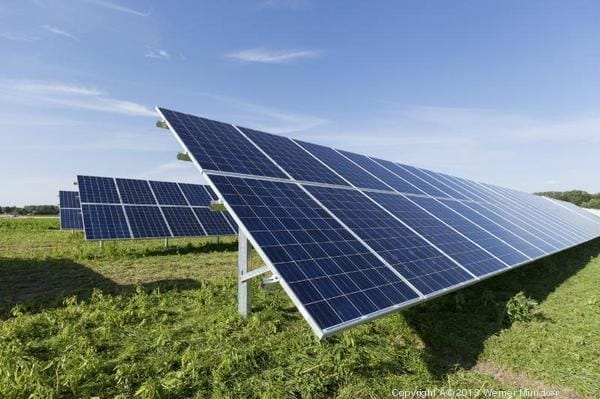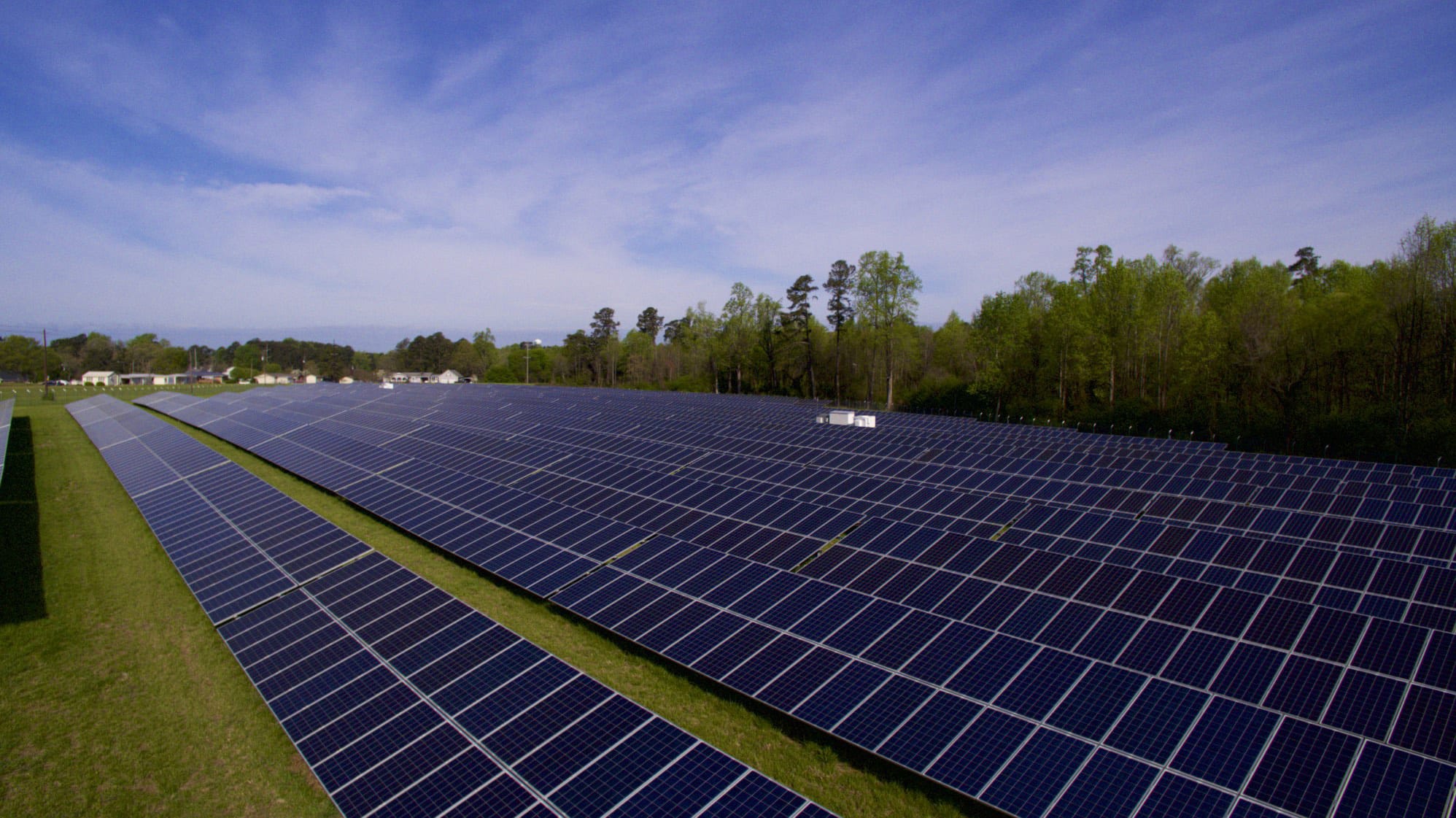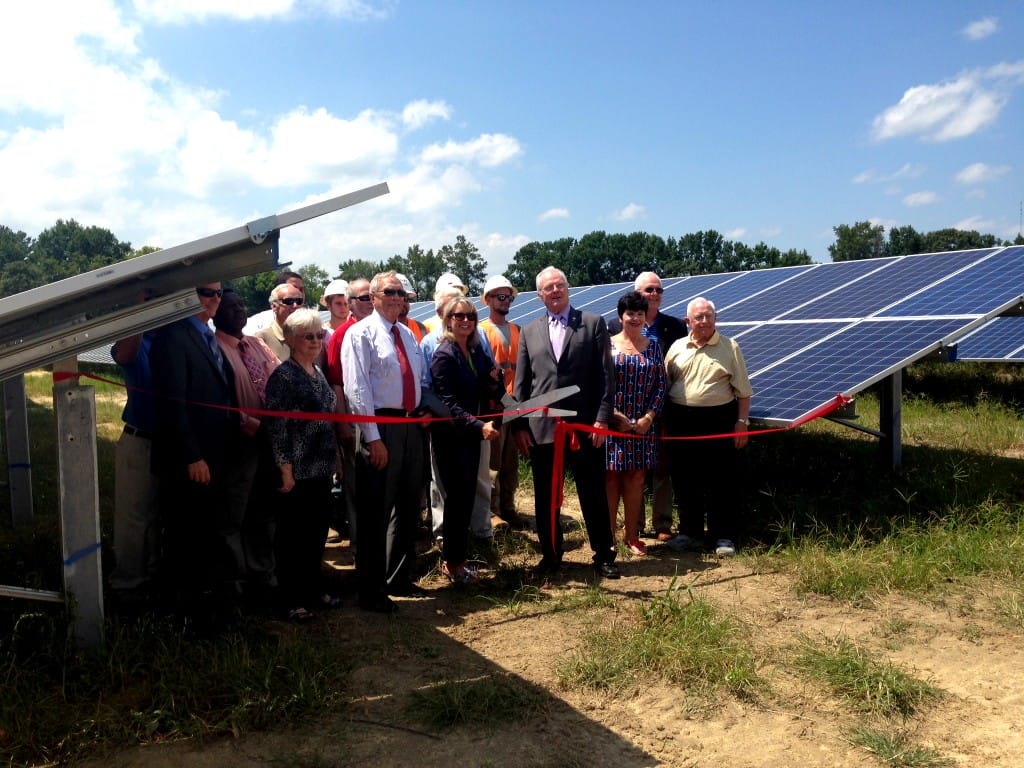Plan in works for solar farm in Pender County
August 26, 2014
Plan in works for solar farm in Pender County
Catawba County got on the bandwagon early, and – closer by – Robeson County has a slew of them. A big one is underway in Duplin County, and now Pender has made the map.
It will be a while before a proposed 5-megawatt, 25,000-panel solar farm reaches the front burner in Pender County – likely when the project will require a special-use permit from the county commissioners, said Planning Director Kyle Breuer. But plans for a facility on Old Savannah Road near Willard were filed with the N.C. Utilities Commission this spring.
Such a facility is considered “mid-sized,” according to Jay Lucas, an engineer with the commission, and the 3-by-5-foot panels would cover about 25 to 30 acres, he calculated. The facility – known in internal company documents as Bearford Farm, LLC – will be developed, built and maintained by Strata Solar, a nationwide builder of such sites headquartered in Chapel Hill.
Strata Solar has developed a whole host of similarly sized plants in eastern North Carolina, Lucas said, and is building a considerably larger facility in Duplin County. The energy generated by the proposed new Pender County solar farm will be sold to Duke Energy, and would be sufficient to keep about 750 homes running, according to Blair Schooff, vice president of sales and marketing for Strata Solar.
CULTIVATING SUN POWER
Strata Solar designs, develops and builds solar farms with financing from banks and other institutional investors. Strata Solar owns a number of farms, while other farms have been sold to investors, who recoup their money from electricity sales to the utility companies while also cashing in on state and federal investment tax credits.
Gently rolling land – think Pender County – is good, Schooff said, when it comes to configuring a solar farm, and “can take care of itself better than land that is completely flat. We tend to look for land that is clear, that has some kind of road frontage. We try to interconnect all these farms on three-phase power – not on the big power lines. Distribution lines, not transmission lines,” he said.
Once up and running, the solar farms generate very little traffic to the site. They are monitored remotely, and repairs are few and far between. There is some grass-cutting and grounds maintenance, mostly in summer. Even in summer, “it's once every couple of weeks” that the farm would generate any visitors, Schooff said.
A TAXPAYER WITH FEW NEEDS
“Not a lot of traffic, and unlike typical developments in a community, there is no need for sewer, no need for water, no need for more school seats,” he added. “These are basically developments that increase the tax base within the community and don't need the services that developments typically do. From our perspective, it's a win-win.”
The solar farms also generate little in terms of noise pollution. “The inverters make a little bit of noise when they are doing their work, but we typically engineer the farms so that the inverters are (on the interior of) the farm,” Schooff said. “At the fence line, there is generally no sound. If you were to walk into one of these farms on a sunny day and go right up to an inverter, we could continue to have a conversation, though there would definitely be a slight humming noise.”
In addition to clean energy, the farms generate jobs and dollars that churn in the local economy.
The Pender County site would be developed by a core crew of already existing Strata employees supplemented by some local hiring.
“Between now and the middle of fall, we'll be doing between five to 10 concurrent projects,” Schooff said by way of example. “The workforce gets pretty substantial. We tend to hire as local as we can to the construction pipeline so that people can have jobs close to their home, and we can continue to rely on that workforce to get even better at what they do.”
The job creation is supplemented by local spending. “Usually, construction is about a six- to 10-week process,” Schooff said. “We'll hire local equipment, and we certainly do a lot of eating in local restaurants, sometimes hiring hotel rooms, and so on. There is a lot of upside for the local communities associated with these projects.”
SOLAR ECONOMICS
The cost of generating solar power has fallen considerably and is now competitive with power generated using traditional fossil fuels. North Carolina is at the forefront of solar's continuing development.
Schooff said the sprouting of solar farms is good business for Duke Energy and other providers, which make money on each kilowatt-hour of solar energy they purchase from the industrial-scale solar farms, then resell to residential and commercial customers. It also enables the company to maintain compliance with state regulations.
It's also good for the investors who end up owning the facility and selling the generated power and selling Renewable Energy Certificates – sometimes bundled with the energy, sometimes sold independently – especially as they are able to take advantage of the available credits to offset other tax liabilities.
Those who own the land, which Strata Solar and a host of other companies either buy or lease on a long-term basis benefit, as well. Rents as high as $600 an acre per year have been reported in the Tar Heel State. That's less than the $670 average revenue per acre for cropland in Pender County, but it comes with a lot less work and a lot less risk.
For farmers, this is a new way to generate secure income from an otherwise uncertain livelihood, all while putting a positive environmental spin on an agricultural industry, especially in hog-rich eastern and southern North Carolina, that has often come under attack as a polluter.
Combine that with 2007 legislation that mandated that North Carolina power companies must follow a schedule of using more and more renewable energy, and the stage was set for growth. North Carolina did not have a solar farm within its boundaries prior to the 2007 legislation. Today, it has more than 120, and many of the companies that build them are growing exponentially.
“Strata Solar is probably the largest (such) builder in North Carolina,” Lucas said of the young company. “They have done dozens of these 5MW systems. They are going up all over eastern North Carolina, which has a tax incentive and where land costs tend to be lower than in other parts of the state.”
“We have been around since 2008, 2009,” Schooff said of Strata Solar. “It terms of doing this utility-scale, distributed/generation-type farm work, we've been at that for about four years. We work throughout the state, and there is a similarity between the products that we build in terms of their size, which tend to occupy between 37 and about 45 acres of land, depending on typography.
“When they get registered like this, it's still fairly early in the development process,” Schooff said of the utilities application. “There is a lot that happens in that process. There might be a project, there might not be a project in the end.
“It's very possible that Pender County will see its first solar farm by Strata,” he said, a development that is still perhaps as much as 12 to 18 months away.”
via Plan in works for solar farm in Pender County


